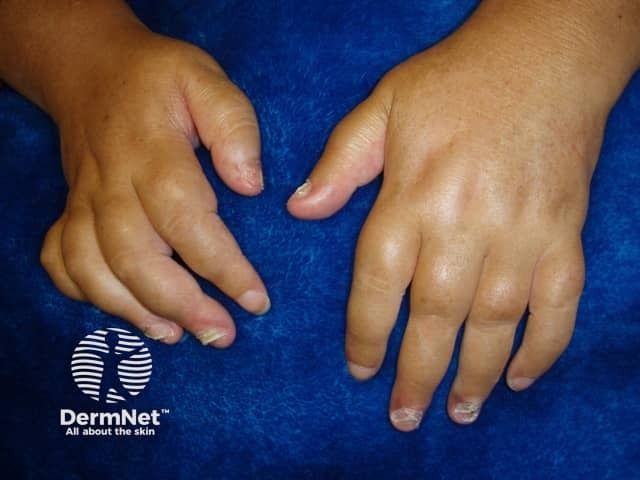- Case-Based Roundtable
- General Dermatology
- Eczema
- Chronic Hand Eczema
- Alopecia
- Aesthetics
- Vitiligo
- COVID-19
- Actinic Keratosis
- Precision Medicine and Biologics
- Rare Disease
- Wound Care
- Rosacea
- Psoriasis
- Psoriatic Arthritis
- Atopic Dermatitis
- Melasma
- NP and PA
- Skin Cancer
- Hidradenitis Suppurativa
- Drug Watch
- Pigmentary Disorders
- Acne
- Pediatric Dermatology
- Practice Management
- Prurigo Nodularis
- Buy-and-Bill
Article
Money matters: Balance estate planning, charitable giving with retirement needs
Many of our high net-worth clients are finding themselves re-evaluating their annual charitable contributions as well as some of their estate planning goals as they concentrate on meeting their future retirement or current income needs. There are always choices, however, that one can make depending on their priorities and resources.
Q:I have seen my net worth shrinking this past year between my real estate holdings and investment accounts and now wonder if my estate planning and charitable goals are still attainable while staying on track to fulfill my retirement needs. Is there a rule of thumb or formula to determine how I should balance the two?
A:That is a very good question, and one that is becoming more and more common as we enter the fourth quarter of this "great" recession. Many of our high net-worth clients are finding themselves re-evaluating their annual charitable contributions as well as some of their estate planning goals as they concentrate on meeting their future retirement or current income needs. There are always choices, however, that one can make depending on their priorities and resources.
First, we will look at annual charitable contributions and gifting goals. One option is to lower or stop these contributions for the time being while we wait for this current financial tsunami to pass. When it will pass is still up for much debate, but estimates range from the second half of 2009 to sometime in 2010 or beyond. This strategy allows current income to be used for living expenses or to increase retirement contributions to offset the reduction in assets seen in many retirement accounts.
For those who use investment assets for their annual contributions to charitable organizations or annual gifting to children, by temporarily lowering or ceasing those expenditures, the current investment assets that may be down substantially from the beginning of 2008 can be left untouched to potentially recover as we eventually move out of this bear market.
If gifting and charitable contributions are a high priority, there is also the ability to adjust some of the other financial goals to allow for the gifting to continue. If planning for retirement, one can push out retirement age by a year or two to allow for more contributions into their retirement accounts and also delay the beginning of the distribution phase.
An individual can also lower their projected income needs during retirement, lessoning the amount of assets needed to maintain a reasonable withdrawal rate at retirement. One could also reduce some of their non-essential current living expenses in favor of continuing their gifting while still boosting up their retirement contributions to help offset the reduction in portfolio values.
If already retired, individuals may opt to lower any non-essential living expenses to free up the cash flow needed to maintain their charitable gifting desires.
The second area we will review is the potential need to adjust an estate plan by lowering the amount of assets earmarked for a charity or family in an attempt to utilize more of the assets for retirement income needs.
Many individuals may have set up trusts with assets, or purchased insurance policies with annual premiums to meet their estate and charitable desires. Some of these people may now feel that they are not in a position to continue making contributions to the trust or insurance policies because of the impact the financial markets have had on their net worth. In this situation, one may decide to keep more control of their assets by not making irrevocable gifts of assets.
One concept worth reviewing for those who are uncomfortable using assets or income for estate and charitable goals, but would like to leave a legacy to their children, grandchildren, or charity is the use of a financed second to die policy. Through a careful design and use of the appropriate trusts one can post a limited amount of collateral, that can remain invested in these depressed markets, and borrow the funds for the second to die policy.
By utilizing a universal policy designed for a larger up front first year premium, many times the initial first year borrowed premium carries the policy for seven to 12 years, depending on the age and health of the two insured, without having to post additional collateral. The borrowed premium and interest will be paid out of the death benefit at the second insured’s death, leaving the net death benefit for the charity or family. Various factors, such as interest rates on the borrowed funds, the interest rate credited by the insurance company and the mortality ages will have an impact on this strategy, so careful consideration should be taken before implementation.
The combination of utilizing the universal second to die policy, along with the premium financing can provide a powerful strategy to leverage your giving without tapping assets or using income.
In summary, there is not a rule of thumb or one strategy that will fit all individuals when it comes to balancing charitable and estate planning goals and ones retirement and income needs. Careful review of your current situation, along with the use of some of the concepts in this article, may assist you in setting up a plan that works for you.DT





